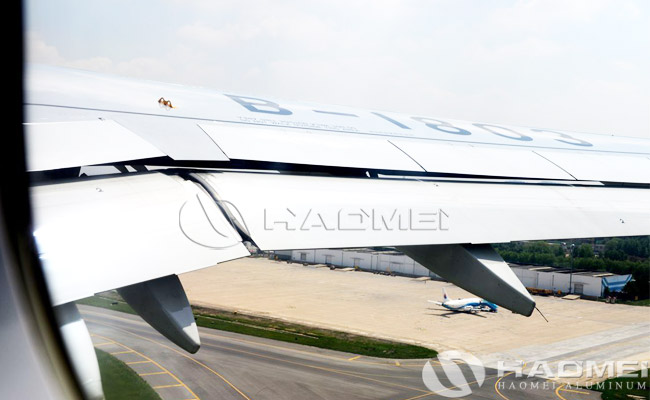The wing is the main component of the aircraft. The wing of the early low-speed aircraft was a wooden structure with cloth as the skin. This kind of wing has low structural strength and poor aerodynamic efficiency, and has long been replaced by metal wings. Aluminum alloys for wing skins and aircraft structures are mainly high-strength 2000 series (2024, 2224, 2324, 2424, 2524, etc.) and ultra-high-strength 7000 series (7075, 7475, 7050, 7150, 7055, 7085, etc.).
As the main load-bearing structure of the aircraft, the wing structure needs to withstand a variety of high loads. The first thing to meet is the structural strength requirements. Under this premise, aircraft designers, based on the development of material technology and material manufacturing technology, use structural materials with high specific strength and specific rigidity as much as possible to achieve the purpose of reducing the weight of the aircraft. In addition, the wing of the aircraft mainly provides lift for the aircraft during the flight. Factors such as the shape and finish of the wing surface will greatly affect the aerodynamic performance of the aircraft, and it also puts forward new requirements for the selection of the aircraft wing structure material. .
With the continuous improvement of aircraft performance, faster speedsand larger loads, the “inherent deficiency” (inadequate strength and rigidity, flammability and corrosion) of the wood cloth material itself has been infinitely amplified, plus material technology, With the rapid development, an aerospace material with excellent performance aluminum alloys for wing skins has appeared, and the transition from wooden aircraft to all-metal aircraft is also a general trend. In the mid-1930s, the all-metal aircraft represented by aircraft aluminum alloy gradually gained a foothold and shined, and it has been in use ever since. The wing skin of this kind of aircraft usually uses super-duralumin alloy with excellent fatigue resistance.

